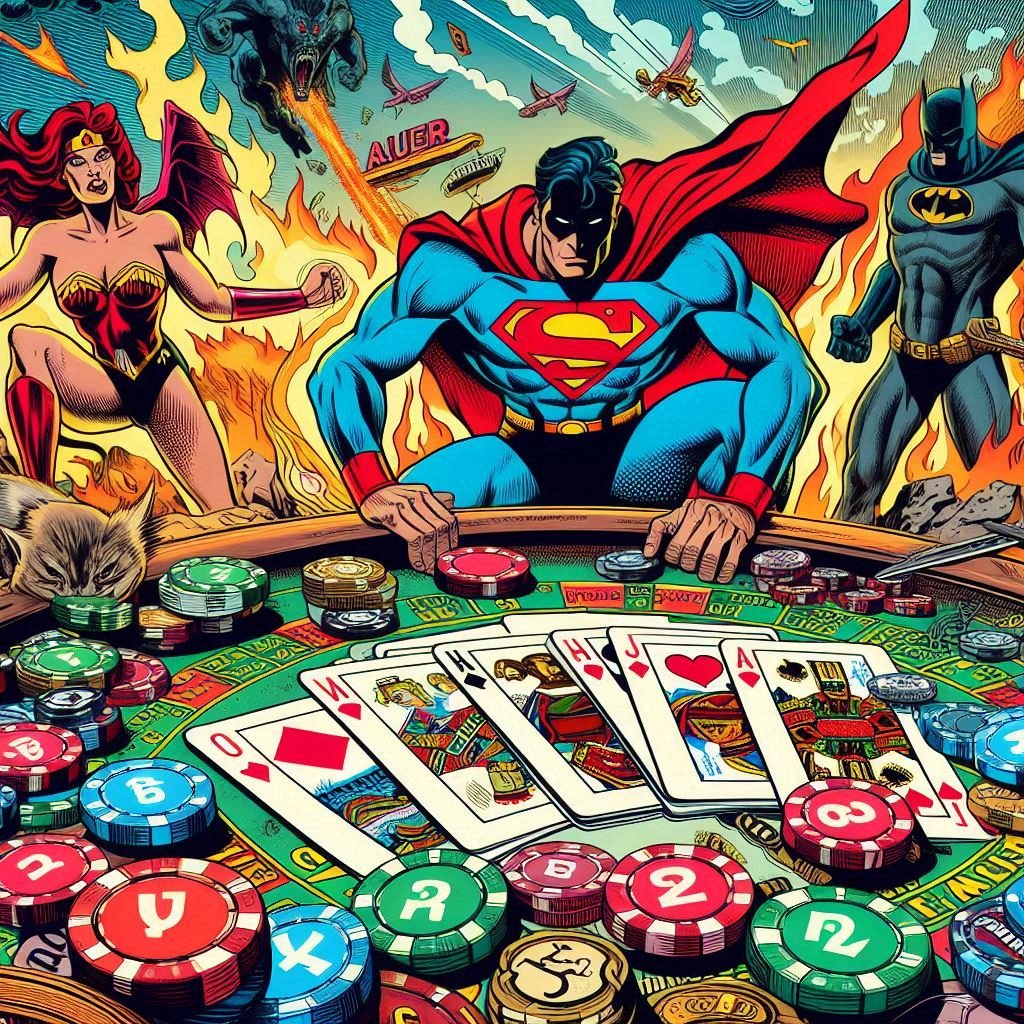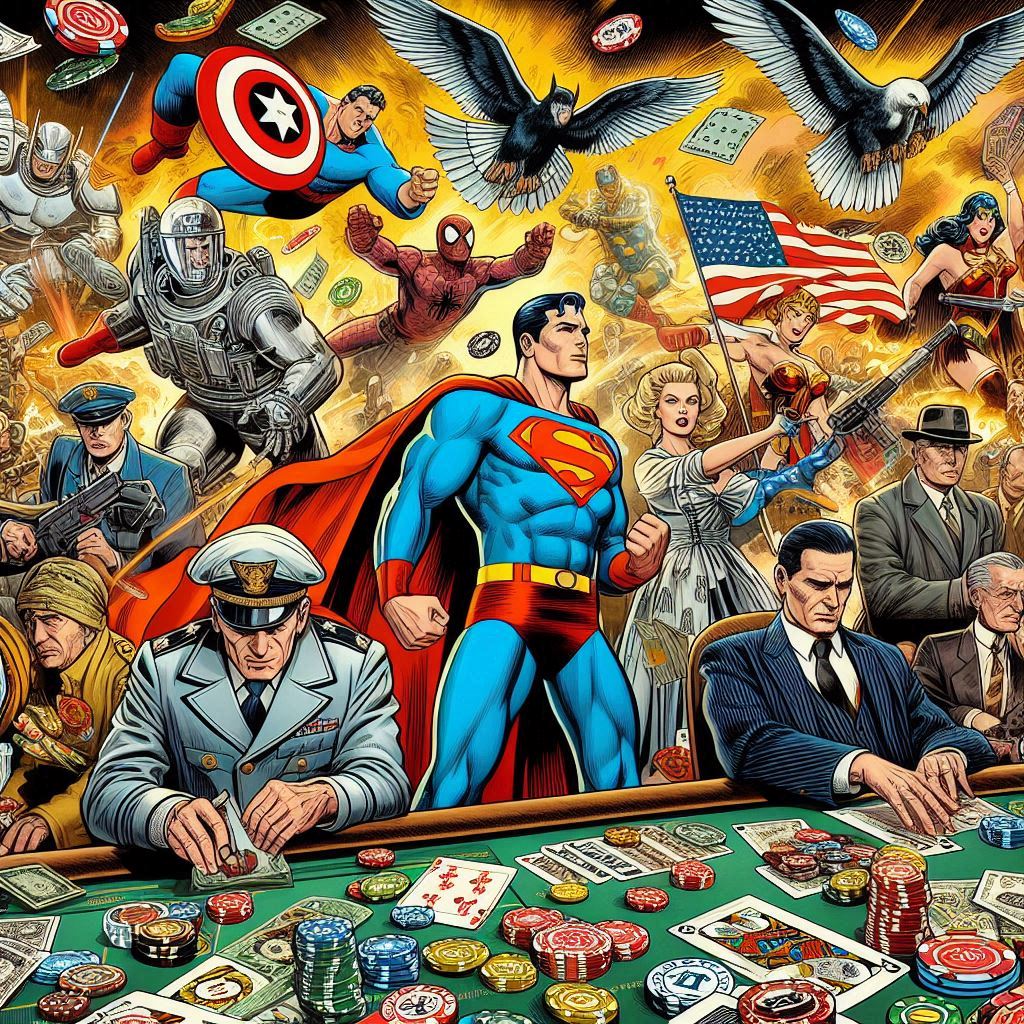The Unexpected Intersection of Comic Book Culture and Gambling: Superheroes and Casinos

At first glance, comic book culture and gambling might seem like two vastly different worlds. One is the imaginative universe where superheroes battle villains, and the other is risk, fortune, and strategy. But dig a bit deeper, and you’ll find that these seemingly disparate realms intersect in ways that are not only intriguing but also deeply reflective of societal views on luck, risk, and morality.
Domino
One of the most emblematic characters when discussing luck in comics is Domino from Marvel’s X-Men universe. Domino, whose real name is Neena Thurman, has a mutant ability that subconsciously manipulates probabilities in her favor, essentially giving her “good luck” in almost any situation.
Dubbed the “luckiest mutant,” Domino epitomizes the concept of fortuitousness. Her powers manifest in ways that seem impossible, turning the odds in her favor in critical moments. Whether it’s escaping from a deadly trap or winning at a high-stakes poker game, her luck often leaves others in awe and disbelief.
Domino’s representation of luck brings out a multifaceted perception of gambling in society. In real life, many people see luck as a critical component of gambling success, and Domino’s adventures reinforce that notion. Through her character, comic book fans empathize with the thrill of favorable odds and marvel at the unpredictable nature of chance, much like what gamblers experience in casinos.
Gambit
No conversation about comic book characters with ties to gambling would be complete without mentioning Gambit. Also known as Remy LeBeau, Gambit is a charming, enigmatic mutant thief from New Orleans who has an affinity for card games, particularly poker.
Gambit’s relationship with gambling isn’t just about his luck; it’s also about skill. Unlike Domino, who relies on her mutant power, Gambit’s prowess in gambling comes from his raw talent and intelligence. His abilities include the power to charge objects (like playing cards) with kinetic energy, making them explosive projectiles. However, his charm and skill at the card table have always been his defining traits.
Through Gambit, we see the notion that winning at games of chance isn’t always about pure luck; strategy and expertise play a crucial role as well. This resonates deeply with the casino-goers who believe in honing their gambling skills, much like poker players mastering the art of bluffing and reading “tells.”
Two-Face
Not all comic book connections to gambling are heroic. Some are firmly entrenched in villainy, like Two-Face from the Batman universe. Harvey Dent, a former district attorney turned villain, utilizes a coin flip to make decisions, embodying the chaotic nature of chance.
Two-Face’s dependence on his coin mirrors the unpredictable elements of gambling. Every flip could go either way, good or bad, win or lose. This duality not only underscores the inherent risk in gambling but also comments on morality and choices.
Two-Face’s character demonstrates how society often views gambling. The worry that gambling can lead to obsession and chaos is symbolized through Dent’s transformation into Two-Face. His damaging reliance on the flip of a coin warns of the potential pitfalls of becoming too engrossed in gambling activities.
Entering the Casino: Iconic Scenes and Symbolism
Comic book narratives seldom shy away from featuring casinos as vibrant backdrops for crucial events. Casinos symbolize wealth, power, and risk—perfect settings for high-stakes scenarios that add tension and drama to the storyline.
One memorable scene includes James Bond comic adaptations, where the suave spy often finds himself at the heart of casinos, playing Baccarat or poker, emphasizing his refined taste and calculated risk-taking. Similarly, Marvel and DC comics have depicted casinos in Las Vegas or Monte Carlo, where protagonists and antagonists alike engage in nail-biting skirmishes.
In many stories, casinos aren’t just settings but characters in their own right. They act as a crux where decisions impact the narrative’s trajectory, much like in real life where a single roll of the dice or spin of the wheel can change one’s fortunes. This highlights the allure and danger inherent in gambling, a powerful narrative tool.
Superheroes and the Morality of Gambling
Comic book culture often delves into the ethics of gambling through its characters. Heroes and villains alike engage with gambling, offering a nuanced view that reflects societal debates about the morality of games of chance.
Characters such as Wolverine have been depicted partaking in poker games, where the stakes aren’t always just money but respect and honor among peers. These depictions allow the audience to explore the grey areas of gambling—where it’s not strictly about winning or losing but about the deeper moral decisions and personal stakes involved.
Superheroes often show resilience, using gambling scenes to highlight their unwavering determination and strategic thinking. For example, Spider-Man might use his intellect to outwit opponents in a game, showcasing responsibility and the moral high ground, even when chances seem slim.
The intersection of comic book culture and gambling offers a rich, engaging tapestry that reflects broader societal attitudes toward risk, luck, and morality. From the luck-driven escapades of Domino and the skilled card play of Gambit to the morally charged coin flips of Two-Face, these stories highlight the multifaceted nature of gambling. As superheroes navigate casinos and games of chance within their narratives, they challenge us to think deeply about our perceptions of luck and the risks we choose to take in our own lives. In the end, much like in the real world, it’s not just about winning or losing but how the game is played.

